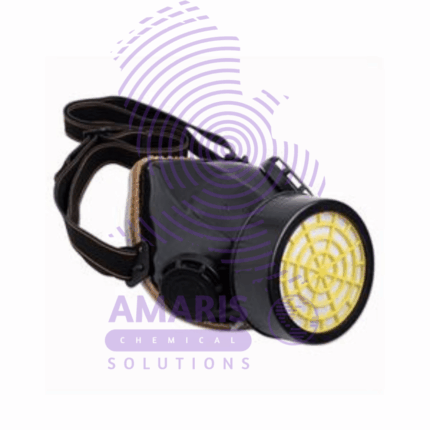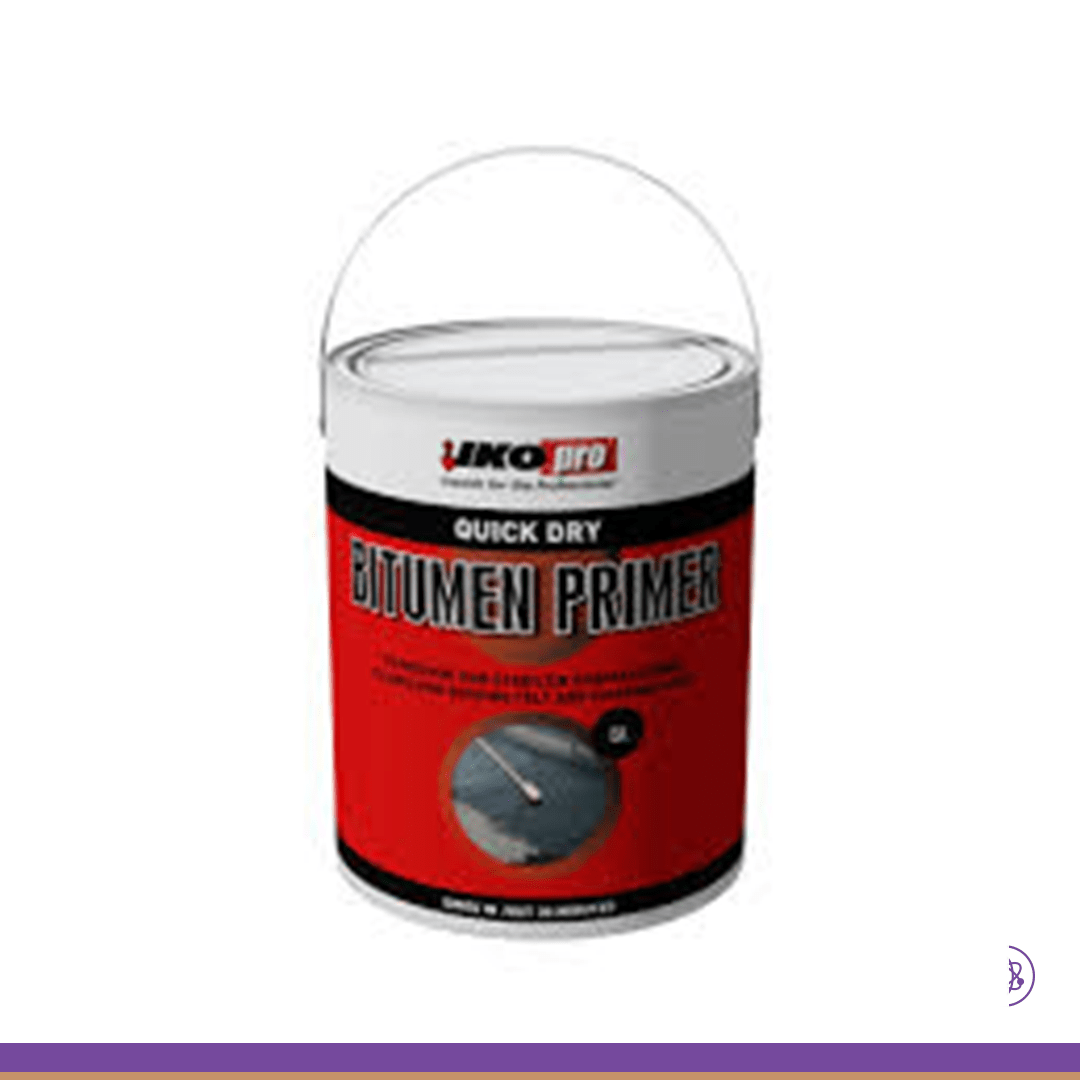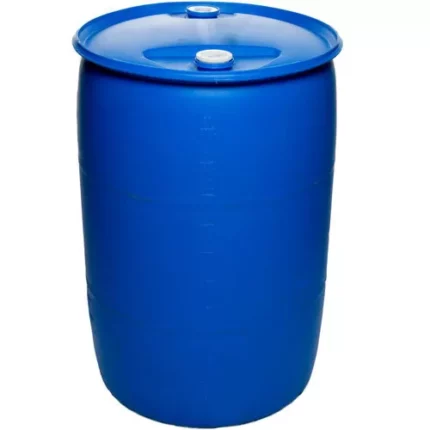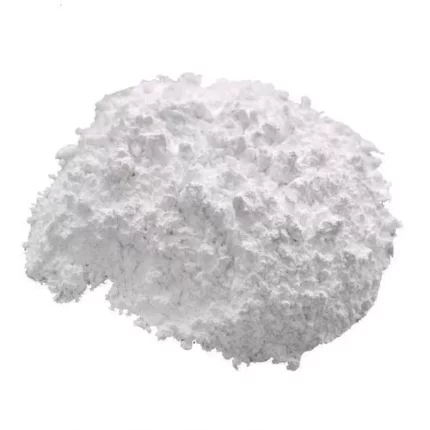

Bitumen Primer
KSh7,000.00 Original price was: KSh7,000.00.KSh6,800.00Current price is: KSh6,800.00.
Bitumen Primer is a solvent-based, low-viscosity coating used to prepare and seal surfaces before applying bituminous waterproofing materials like membranes, mastics, or adhesives. It enhances adhesion, fills pores in concrete/metal, and provides a protective layer against moisture and corrosion. Commonly used in roofing, foundations, pipelines, and repair work, it dries quickly and forms a strong bond for long-lasting waterproofing. Ideal for both new construction and maintenance projects.
BITUMEN PRIMER USES
Surface Preparation
- Seals Porous Surfaces: Bonds to concrete, masonry, or metal to create a uniform base.
- Improves Adhesion: Ensures better sticking of bituminous membranes, coatings, or mastics.
Waterproofing
- Foundations & Basements: Prevents moisture seepage in below-ground structures.
- Roofing: Used under bitumen sheets (e.g., APP/SBS membranes) or liquid-applied roofing.
- Bridges & Tunnels: Protects against water ingress in civil engineering projects.
Corrosion Protection
- Metal Pipes & Tanks: Acts as a rust-inhibitive base coat before bitumen wrapping.
Repairs & Maintenance
- Patch Prep: Cleans and primes damaged areas before applying repair compounds
1. Basic Identification Attributes
- Chemical Name: Bituminous solvent-based primer (mixture of bitumen and solvents)
- CAS Number: 8052-42-4 (for bitumen/asphalt), solvent CAS varies (e.g., 64742-95-6 for mineral spirits)
- HS Code: 3208.10.00 (Bituminous paints) or 2715.00.00 (Bitumen mixtures)
- Molecular Formula: Complex hydrocarbon mixture (no single formula)
- Synonyms: Asphalt primer, Bitumen paint, Bituminous undercoat, Cold-applied primer
2. Physical & Chemical Properties
- Physical State: Liquid (low-viscosity)
- Color & Odor: Dark brown/black; strong petroleum odor
- Boiling Point: 150–400°C (depends on solvent blend)
- Melting Point: N/A (bitumen softens at ~60–100°C)
- Density/Specific Gravity: 0.9–1.1 g/cm³
- Solubility:
- Water: Insoluble
- Organic Solvents: Miscible with hydrocarbons (e.g., xylene, toluene)
- pH Level: Neutral (~6–8)
- Vapor Pressure: High (due to volatile solvents)
- Flash Point: 30–60°C (flammable; solvent-dependent)
- Autoignition Temperature: ~250–400°C
- Viscosity: 50–200 cP (varies by formulation)
3. Safety & Hazard Attributes
- Hazard Class (GHS):
- Flammable Liquid (Category 3/4)
- Skin Irritant (Category 2)
- May cause drowsiness (solvent vapors)
- NFPA Ratings: Health: 2 | Flammability: 3 | Reactivity: 0
- Exposure Limits (OSHA PEL):
- Bitumen fumes: 5 mg/m³ (8-hr TWA)
- Solvents (e.g., toluene): 200 ppm (OSHA PEL)
- Reactivity: Stable but incompatible with strong oxidizers (e.g., peroxides, nitric acid).
4. Storage & Handling Attributes
- Storage Conditions:
- Cool, dry, ventilated area away from ignition sources
- Temperature: <30°C (to reduce solvent evaporation)
- Incompatible Materials: Oxidizers, acids, alkalis
- Container Type: Metal drums or solvent-resistant plastic containers
- Shelf Life: 12–24 months (sealed, unopened)
- Special Handling:
- PPE: Nitrile gloves, goggles, respirator (organic vapor cartridge)
- Use in well-ventilated areas (avoid confined spaces)
5. Regulatory & Compliance Attributes
- Regulatory Status:
- EPA: Regulated under CERCLA for spill reporting (if contains hazardous solvents).
- REACH: Bitumen components registered; solvents may require SDS disclosure.
- DOT: UN1136 (Coal tar or bitumen solutions, flammable), Class 3.
- Hazard Symbols:
- Flame (flammable)
- Exclamation mark (irritant)
- Transportation Restrictions:
- UN Number: UN1136 (if flash point <60°C)
- Packing Group: III
- Waste Disposal:
- Incineration or licensed hazardous waste facility (solvent content).
6. Environmental & Health Impact
- Ecotoxicity:
- Toxic to aquatic life (solvents, PAHs in bitumen).
- Avoid spills into waterways.
- Persistence:
- Bitumen: Slow degradation; solvents evaporate or degrade faster.
- Carcinogenicity/Mutagenicity:
- Bitumen fumes classified as IARC Group 2B(possibly carcinogenic).
- Some solvents (e.g., benzene derivatives) are OSHA carcinogens.
- Biodegradability: Poor (bitumen is persistent; solvents may biodegrade)
Personal Protective Equipment (PPE)
- Wear chemical-resistant gloves(nitrile or neoprene).
- Use safety goggles or a face shieldto prevent eye contact.
- Wear long-sleeved clothingand aprons to avoid skin exposure.
- Use respiratory protection(organic vapor respirator) in poorly ventilated areas.
- Wear steel-toe bootsfor foot protection.
Handling & Storage
- Store in a cool, dry, well-ventilated areaaway from heat, sparks, and open flames.
- Keep containers tightly closedwhen not in use.
- Use non-sparking toolsto avoid ignition.
- Ground containers during transfer to prevent static buildup.
- Avoid skin contactand inhalation of fumes.
Ventilation
- Work in well-ventilated areasor use local exhaust ventilation.
- Avoid confined spaces without proper air circulation.
Spill & Leak Control
- Contain spills using inert absorbents(sand, vermiculite).
- Avoid washing into drains or water sources.
- Dispose of waste according to local hazardous waste regulations.
Inhalation (Fumes Exposure)
- Move to fresh air
- If breathing is difficult, provide oxygenand seek medical attention.
Skin Contact
- Remove contaminated clothing.
- Wash affected area with soap and water(do not use solvents).
- If irritation persists, seek medical help.
Eye Contact
- Flush eyes with lukewarm waterfor at least 15 minutes.
- Hold eyelids open to ensure thorough rinsing.
- Seek immediate medical attention.
Ingestion (Swallowing)
- Do NOT induce vomiting.
- Rinse mouth with water and seek emergency medical help.
Bitumen primer is flammable and can release toxic fumes when burning.
Suitable Extinguishing Media
- Dry chemical powder (ABC type)
- Carbon dioxide (CO₂)
- Foam(for larger fires)
- Water spray(to cool containers, but not direct jets)
Unsuitable Extinguishing Media
- Avoid water jets(can spread fire).
Firefighter Precautions
- Wear self-contained breathing apparatus (SCBA)and full protective gear.
- Cool nearby containers with water sprayto prevent explosion.
- Prevent runoff from entering drains or water bodies.
Special Hazards
- Burning bitumen primer releases toxic fumes (CO, SO₂, etc.).
- Risk of re-ignitioneven after flames are extinguished
Related products
Bentonite Powder
Bondex 5299
- Key Features: ✔ Penetrates pores for strong bonding ✔ Compatible with bitumen membranes & mastics ✔ Quick-drying (1–4 hours)
Bondex Polytex 50H
Bondex Polytex 50H is a cold-applied, self-adhesive, fiber-reinforced bituminous membrane designed for high-performance waterproofing. Its polymer-modified asphalt compound offers superior flexibility, crack-bridging ability (up to 2mm), and weather resistance. Ideal for roofs, terraces, basements, and wet areas, it ensures a strong, seamless, and long-lasting waterproof barrier without torch heating. Easy to install and low-maintenance, it adheres firmly to concrete, metal, and existing bitumen surfaces.
✔ Fiber-reinforced for durability ✔ Torch-free application (safe & fast) ✔ UV & weather-resistant



 LABORATORY EQUIPMENT & APPARATUS
LABORATORY EQUIPMENT & APPARATUS
 Fertilizers
Fertilizers Plant Growth Regulators
Plant Growth Regulators Soil Conditioners
Soil Conditioners Animal Feed Additives
Animal Feed Additives Biostimulants
Biostimulants Dough Conditioners
Dough Conditioners Flour Treatments
Flour Treatments Fat Replacers
Fat Replacers Preservatives (baking)
Preservatives (baking)
 Surfactants (cleaning)
Surfactants (cleaning) Builders
Builders Bleaching Agents
Bleaching Agents Enzymes
Enzymes Solvents (cleaning)
Solvents (cleaning) Fragrances
Fragrances





















Reviews
There are no reviews yet.